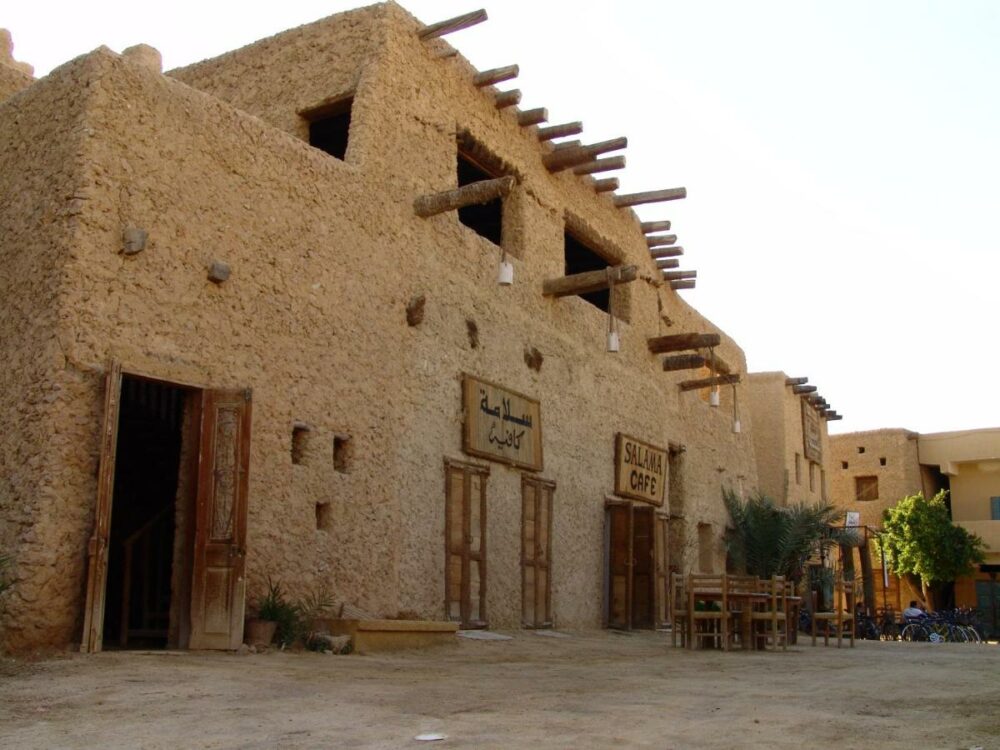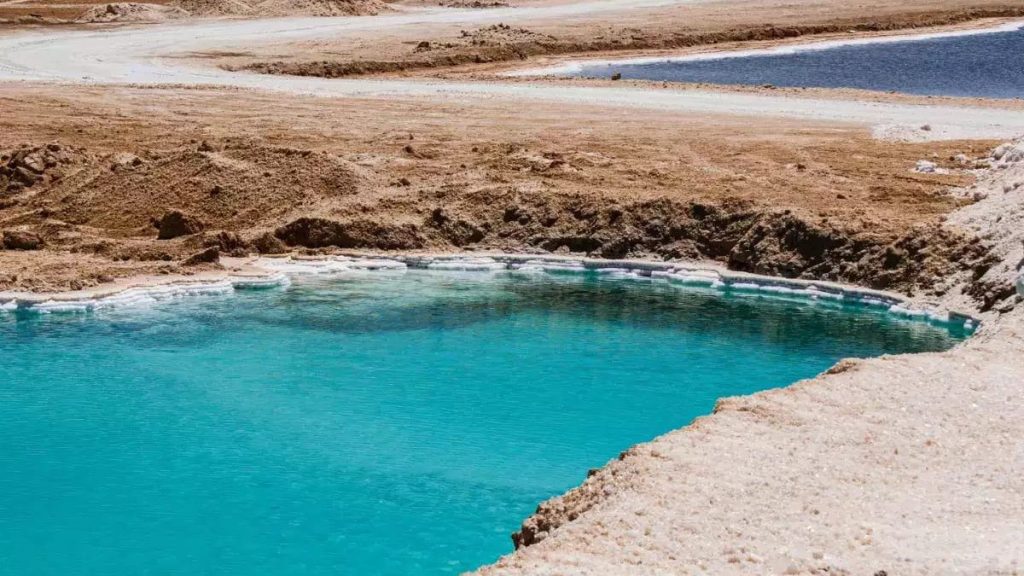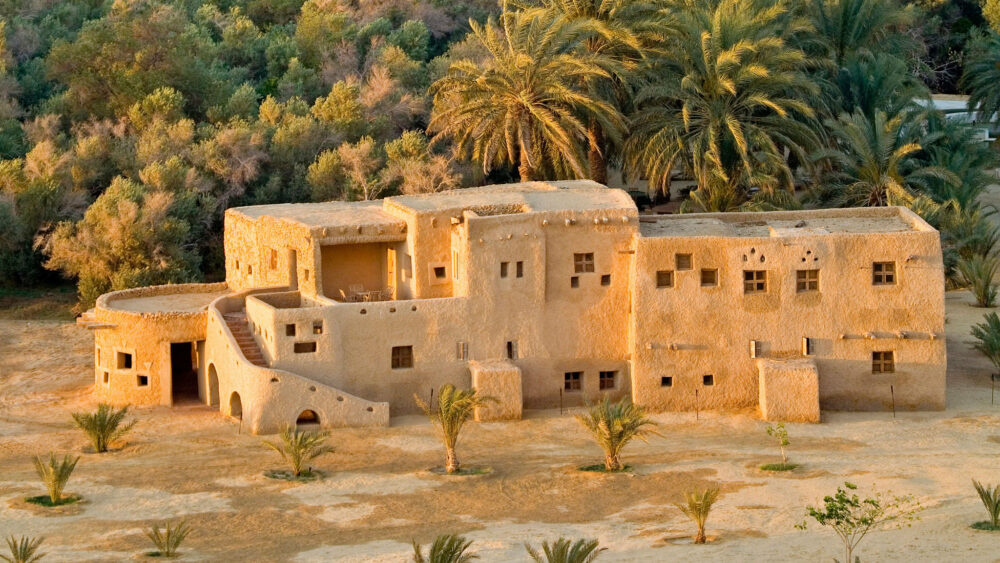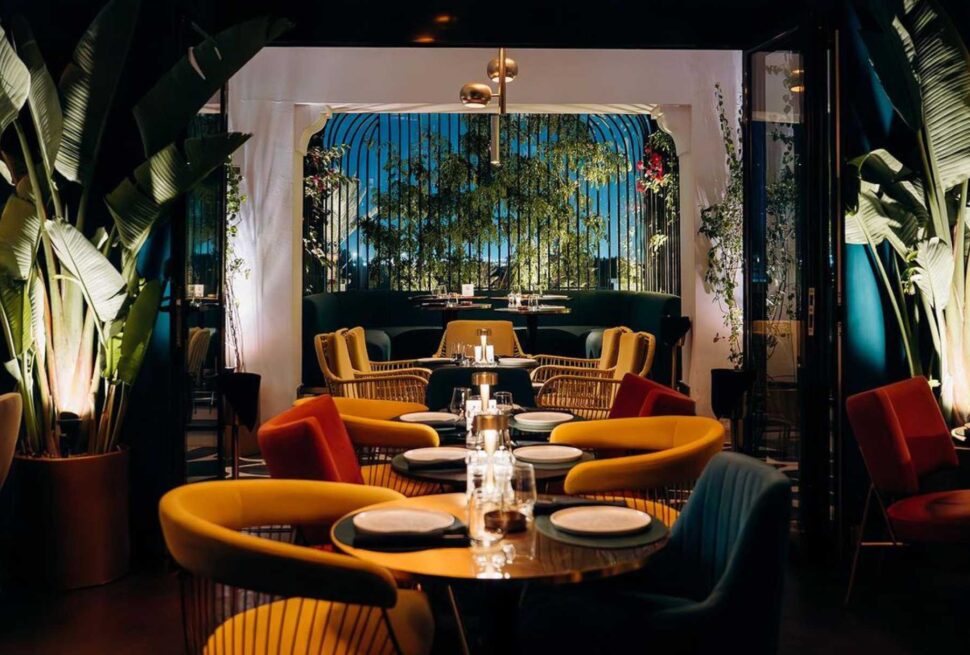
Introduction
As I prepared to explore the mesmerizing Siwa Oasis, I couldn’t help but feel a rush of excitement about diving into its rich cultural tapestry. Siwa, with its blend of ancient history and vibrant traditions, is like a treasure trove just waiting to be discovered.
The Allure of Siwa
- A serene retreat surrounded by stunning landscapes
- Home to the iconic Siwa Oasis
- A destination where history and culture flourish
Join me as I embark on this adventure, diving deep into the stories, traditions, and natural wonders that make Siwa a unique and unforgettable place!

Exploring Siwa’s History
Immersing myself in Siwa’s past felt like stepping into a captivating storybook. From fascinating ancient ruins to the vibrant traditional crafts still practiced today, the rich history of this region is truly remarkable.
Ancient Ruins
As I wandered through the sun-drenched landscapes, I stumbled upon ancient ruins that spoke volumes about Siwa’s storied past.
- The Temple of the Oracle: A must-visit! This is where Alexander the Great sought guidance, emphasizing Siwa’s significance in ancient times.
- Shali Fortress: The remains of this mud-brick fortress painted a vivid picture of the past, showcasing the resilience of Siwa’s people.
These ruins not only enchanted me but also whispered tales of those who came before us, highlighting their enduring impact on the present.
Traditional Crafts
Another aspect of Siwa’s heritage that captivated me was its traditional crafts. I explored local workshops where artisans poured their hearts into creating intricate handmade items.
- Pottery: Beautifully crafted, often featuring designs that reflect Siwan culture.
- Weaving: Colorful textiles produced using ancient techniques that have been passed down through generations.
Witnessing these artisans at work was a heartfelt reminder of how deeply intertwined art and history are in Siwan society. I even got a chance to try my hand at pottery, creating a piece that I proudly took home as a souvenir of my journey!
.jpg)
Siwa’s Architectural Heritage
As I continued my journey through Siwa, I was absolutely enchanted by its stunning architectural heritage. The unique structures here, from traditional mud-brick houses to historic mosques, tell a story of resilience, community, and the spirit of the Siwan people.
Mud-brick Houses
Walking through the narrow, winding streets, the mud-brick houses immediately caught my eye. These buildings, constructed from natural materials, blend beautifully into the rugged landscape.
- Eco-Friendly Design: The thick walls keep the interiors cool during the scorching day and warm at night.
- Architectural Charm: Arched doorways and intricate carvings added to the unique character of these homes.
I was fortunate enough to be invited into a local home where I experienced the warmth of Siwan hospitality. The family shared stories about their generations growing up in such timeless structures, reminding me how architecture reflects their way of life.
Historic Mosques
Equally enchanting were the historic mosques that dotted the landscape. These sacred spaces reflected a blend of Islamic architecture and local traditions.
- Mosque of Siwa: This stunning mosque features a high minaret and is known for its inviting atmosphere.
- Al-Mu’allim Mosque: Sheltering rich history within its walls, it offers a peaceful refuge for prayer and reflection.
Visiting these mosques gave me a chance to soak in the serenity of Siwa’s spiritual life, where beliefs and architecture harmoniously coexist. I even participated in a local prayer session, immersing myself deeper into the culture and community spirit.

Immersing in Siwa’s Cultural Traditions
Stepping deeper into the heart of Siwa, I was eager to immerse myself in the vibrant cultural traditions that give life to this oasis. From captivating folk music performances to the delectable flavors of traditional Siwan cuisine, each experience was a celebration of the community’s heritage.
Folk Music Performances
One evening, I had the pleasure of attending a lively folk music performance, and it truly felt like stepping into a local celebration.
- Instruments: The musicians played traditional instruments like the rebab, a type of bowed string instrument, and the darabuka, a goblet drum.
- Dancing: Locals joined in the dance, twirling and laughing, creating an infectious atmosphere that invited everyone to participate.
The energy was palpable, and I found myself swept away by the rhythm, learning a few dance steps alongside cheerful locals. Each performance told stories of love, life, and tradition, beautifully reflecting the emotions of the Siwan people.
Traditional Siwan Cuisine
After that exhilarating experience, I indulged my taste buds in some traditional Siwan cuisine that left a lasting impression.
- Local Dishes: Dishes like marqoq, a flavorful bread served with tagines, and couscous, a staple made from finely rolled durum wheat, were absolute delights.
- Fresh Ingredients: Meals often included locally grown vegetables and herbs, offering a fresh burst of flavor in every bite.
I was fortunate enough to join a family for a cooking class, where we prepared these dishes together. The scents filled the air, making it a sensory celebration that deepened my appreciation for Siwa’s culinary heritage. Sharing a meal with locals added a touch of warmth to my journey, as each bite became a reminder of the love and tradition woven into every dish.

Connecting with Local Communities
As my Siwa adventure continued, I found that connecting with the local communities truly enriched my experience. These interactions offered me insight into their daily lives, traditions, and the warm hospitality that defines Siwan culture.
Engaging with Locals
During my stay, I made it a goal to engage with local families and artisans to better understand their world.
- Home Visits: I was welcomed into several homes, where I participated in their daily routines, which provided an authentic glimpse into the Siwan way of life.
- Craft Workshops: I joined workshops where local artisans shared their skills in pottery and weaving, allowing me to create my own memento while learning about the importance of these crafts.
Each interaction was filled with laughter and stories, reminding me of the universal bonds we share regardless of where we come from. I even left with some friends whom I promised to stay in touch with, a testament to the strong connections I forged during my time there.
Community Events
I was fortunate enough to participate in a local festival, where the sense of community was palpable.
- Traditional Games: Locals engaged in friendly competitions, and I couldn’t resist trying my hand at a few traditional games.
- Cultural Showcases: The festival featured exhibitions of Siwan music, dance, and traditional dress, showcasing the vibrant heritage of the community.
These moments of connection revealed the heart and soul of Siwa, leaving me with memories that I’ll cherish forever. For anyone looking to explore Siwa, I highly recommend stepping beyond the tourist path and embracing the local culture—it’s an experience like no other!

Siwa’s Natural Treasures
After immersing myself in the rich cultural fabric of Siwa, I was eager to explore its breathtaking natural treasures. The contrast of the lush Siwa Oasis against the stark desert landscape was a sight to behold, and the majestic salt lakes added to the area’s allure.
Siwa Oasis
Nestled amidst the surrounding desert, the Siwa Oasis is a true gem that captivated my heart.
- Lush Palms: Strolling through the oasis, I marveled at the tall date palms swaying gently in the breeze, providing a calming ambiance.
- Natural Springs: The healing waters of the natural springs, such as Cleopatra’s Bath, invited me to take a refreshing dip and soak up the rejuvenating properties of the mineral-rich waters.
I took a moment to reflect and appreciate the contrast of this thriving oasis with the vastness of the surrounding desert; it felt like nature’s sanctuary in the midst of an arid landscape.
Salt Lakes
Just when I thought my journey couldn’t get any better, I made my way to the stunning salt lakes of Siwa.
- Crystal Clear Waters: The shimmering surface of the lakes mirrored the brilliant sun, creating a sparkling oasis that felt surreal.
- Unique Experiences: I had the chance to float in the salty waters, which was an exhilarating sensation reminiscent of swimming in the Dead Sea.
Capturing photographs of the ethereal surroundings felt like a dream, with the contrast of the blue water against the white salt crust creating stunning visuals. Each moment spent in Siwa’s natural treasures was a reminder of the beauty and diversity that nature has to offer, making my visit truly unforgettable.

Sustainability Efforts in Siwa
As I continued to explore the remarkable beauty of Siwa, I was delighted to learn about the community’s dedication to sustainability. With its unique environment, preserving this natural paradise is essential, and the locals have embraced initiatives that contribute to environmental protection while promoting eco-friendly tourism.
Community-Led Initiatives
I discovered that the Siwan people are passionate about protecting their oasis and the surrounding landscapes.
- Organic Farming: Many farms have adopted organic practices, reducing the use of harmful pesticides and supporting local biodiversity.
- Water Conservation: Innovative irrigation techniques are being employed to make the best use of the precious water resources from the springs.
I had the opportunity to visit a family-run farm where they proudly showcased their organic produce. The fresh vegetables were bursting with flavor, and the sense of pride in their sustainable practices was evident.
Eco-Friendly Tourism Practices
The burgeoning eco-tourism sector in Siwa also plays a vital role in promoting sustainability.
- Eco-Lodges: Many accommodations have been developed with sustainability in mind, using natural materials and minimizing waste.
- Guided Tours: Local guides focus on educating visitors about environmental conservation, ensuring that tourism benefits rather than harms the community.
On one of my day trips, I participated in a guided eco-tour that highlighted the importance of preserving the delicate ecosystems of the oasis. It really opened my eyes to how tourism could be a vehicle for good when approached thoughtfully. Leaving Siwa, I felt proud to have supported a community genuinely committed to sustainability for generations to come.

Promoting Eco-Tourism
Building on the strong sustainability efforts I’ve encountered in Siwa, the promotion of eco-tourism is crucial to maintaining the area’s natural beauty while providing economic benefits to the local community. I was thrilled to see how this movement is enriching both the environment and the lives of the Siwan people.
Local Experiences
One of the delightful aspects of eco-tourism in Siwa is the emphasis on authentic local experiences.
- Cultural Immersion: Tourists are encouraged to engage with local families, learning about their traditional crafts and daily rituals.
- Nature-Based Activities: Hiking, biking, and guided tours through the oasis and surrounding landscapes offer travelers a chance to connect deeply with nature.
During a guided hike, I encountered a local herbalist who shared his knowledge of native plants and their medicinal properties. Not only was it fascinating, but it also sparked an appreciation for the wisdom embedded in the local culture.
Supporting Local Economies
Eco-tourism has also created sustainable income streams for the community.
- Job Creation: Opportunities arise in areas such as hospitality, guiding, and craftsmanship, allowing Siwan families to sustain their livelihoods while promoting their heritage.
- Market Exposure: Local artisans benefit from selling their crafts directly to visitors, providing them with a platform to showcase their unique skills.
I purchased some beautiful handmade items from local artisans, knowing that my dollar would directly benefit them. It felt rewarding to contribute to the local economy while taking home a piece of Siwa’s culture.Encouraging eco-tourism not only protects Siwa’s stunning environment but also nurtures its vibrant community, ensuring that this magical oasis thrives for generations to come.

The Impact of Tourism on Siwa’s Heritage
As I dived deeper into Siwa’s eco-tourism initiatives, I couldn’t help but reflect on the broader impact of tourism on the region’s rich heritage. While it offers exciting possibilities for economic growth, I realized that it also poses challenges that must be thoughtfully addressed to preserve the local culture.
Benefits of Tourism
Tourism can be a powerful catalyst for preserving Siwa’s heritage in several ways:
- Cultural Exchange: An influx of visitors fosters a vibrant exchange of traditions and practices, enriching both residents and tourists.
- Investment in Conservation: Increased awareness often leads to funding for preserving historical sites and natural resources, ensuring that they remain intact for future generations.
I witnessed this firsthand during a visit to an ancient site where restoration efforts were underway, funded by tourism revenue. It felt heartwarming to see that continued interest could revitalize forgotten places.
Challenges Faced
However, I also noticed some potential downsides that could threaten Siwa’s cultural integrity:
- Overtourism: Excessive foot traffic can lead to the deterioration of fragile historical sites and natural environments, impacting their longevity.
- Cultural Dilution: An influx of tourists can sometimes lead to modifications in traditional practices to cater to visitor expectations, risking the loss of authenticity.
During a community gathering, I heard locals express concerns about balancing tradition with the demands of tourism. Conversations like these reminded me of the delicate dance between embracing economic opportunities and safeguarding the unique identity of Siwa.Ultimately, it’s clear that tourism presents both challenges and opportunities for Siwa. By focusing on sustainable practices and community involvement, we can ensure that this enchanting oasis continues to thrive while preserving its rich heritage.

Reflecting on the Importance of Heritage Preservation
As I concluded my journey through Siwa, I found myself deeply reflecting on the significance of heritage preservation. The interactions I had, the places I visited, and the stories I heard etched a lasting impression on my heart and mind, highlighting how crucial it is to safeguard our cultural treasures.
The Essence of Identity
Preserving heritage is vital, as it serves as the backbone of cultural identity:
- Connection to the Past: Heritage links us to our ancestors and their traditions, offering insight into who we are today.
- Cultural Education: Through the preservation of cultural practices, younger generations can learn valuable lessons from their history.
During my visit to a local school where children were learning traditional crafts, I could see the light in their eyes as they connected with their roots. It was a powerful reminder of how these practices not only enrich lives but also foster a sense of belonging.
Community and Economic Impact
Moreover, heritage preservation plays a crucial role in benefiting local communities:
- Tourism Revenue: Sustaining heritage sites attracts visitors and generates income, which can support local economies and create jobs.
- Empowerment: Engaging locals in preservation efforts fosters pride and stewardship for their cultural heritage.
I participated in a restoration project led by the community, where I helped clean a historical site. The enthusiasm among locals was contagious, showcasing how preservation efforts can galvanize community spirit.Reflecting on my experiences in Siwa, it is abundantly clear that preserving heritage isn’t just about safeguarding the past—it’s about honoring our identities, enriching our communities, and securing a vibrant future for generations to come. As travelers and global citizens, it’s our responsibility to respect and contribute to these invaluable efforts!





